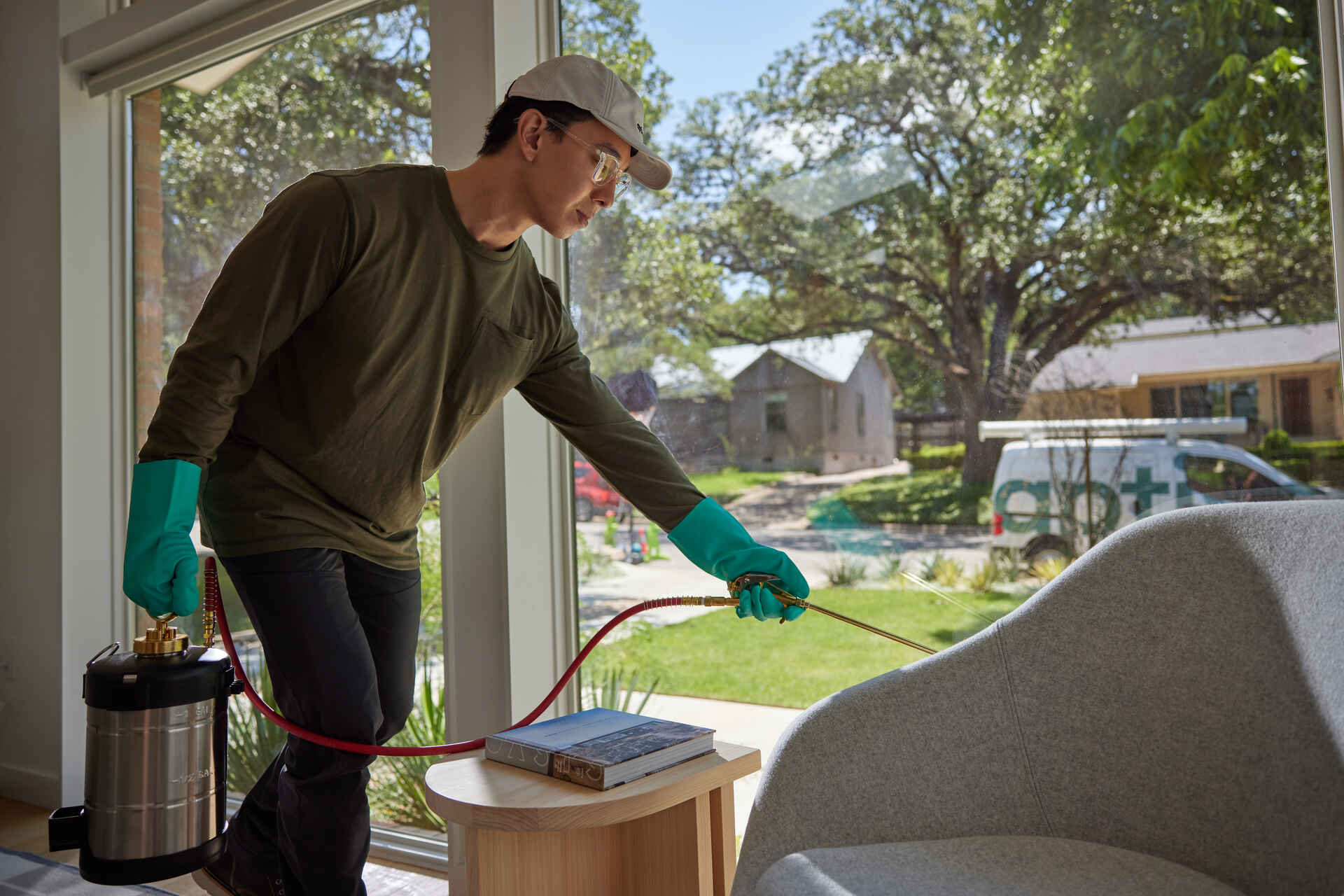Relied On A1 Exterminator Charlotte NC - Comprehensive Pest Solutions
Relied On A1 Exterminator Charlotte NC - Comprehensive Pest Solutions
Blog Article
Bed Pest Treatment Malfunction: Contrasting Chemical Vs. Non-Chemical Solutions
In the world of insect control, particularly when dealing with the consistent concern of bed insects, the selection between chemical and non-chemical therapy options can be a critical one. Both methods use unique advantages and drawbacks, influencing elements such as effectiveness, safety and security considerations, and general expense. By checking out the nuanced details of each method, a more clear understanding of which course to seek in resolving a bed pest infestation can be achieved.
Effectiveness of Chemical Therapies
Chemical therapies for bed pest problems have been widely acknowledged for their powerful and rapid effectiveness in removing these insects. When taking into consideration the effectiveness of chemical therapies, it is vital to understand that they can provide a fast and comprehensive option to a bed bug trouble.
Moreover, chemical therapies have the benefit of providing recurring results, meaning that they can remain to eliminate bed pests even after the first application. This residual activity is especially useful in combating any kind of potential re-infestations. Furthermore, the quick activity of chemical therapies can bring alleviation to individuals facing serious bed pest problems, enabling them to regain control of their space quickly.
Safety And Security Worry About Chemical Solutions
One important facet that calls for careful factor to consider when making use of chemical services for bed bug treatment is making sure the safety and security of occupants and the environment. Exposure to certain chemicals used in bed pest therapies can lead to respiratory issues, skin irritation, or other unfavorable responses, particularly in individuals with pre-existing problems or level of sensitivities.
In addition, the environmental influence of chemical remedies is an additional substantial factor to consider. Some pesticides utilized in bed insect therapies might be unsafe to helpful bugs, wild animals, and communities if they leach right into the soil or water systems. It is important to utilize chemical treatments deliberately, following safety and security guidelines, and considering less poisonous alternatives to mitigate these threats and ensure the efficient and risk-free monitoring of bed pest problems.
Advantages of Non-Chemical Strategies
Taking into consideration the potential safety worries and ecological influence associated with chemical solutions for bed bug treatment, discovering non-chemical strategies offers a promising choice with numerous distinct benefits. Non-chemical methods provide a safer choice for houses, particularly those with family pets, people, or youngsters sensitive to harsh chemicals. These strategies get rid of the risks of exposure to harmful substances, lowering the potential for adverse wellness effects. Furthermore, non-chemical therapies are eco-friendly, as they do not add to air or water contamination, making them a sustainable choice for pest control.
In addition, non-chemical services can be reliable in targeting bed pests, including hard-to-reach locations where chemical treatments might not penetrate - A1 exterminators charlotte nc. Techniques such as warmth treatment, vacuuming, vapor cleansing, and mattress coverings provide thorough elimination without the usage of hazardous chemicals.
Limitations of Non-Chemical Treatments

In addition, non-chemical therapies typically call for several applications to achieve successful elimination. This can be lengthy and may not constantly ensure complete elimination of all bed insects and their eggs, particularly in hard-to-reach or covert locations.
Furthermore, the success of non-chemical treatments greatly depends on appropriate implementation and thoroughness, which can be testing for people without specialist know-how. Insufficient application of non-chemical techniques may lead to incomplete obliteration, leading to persistent infestations and the need for additional treatments.
Consequently, while non-chemical therapies have their benefits, it is necessary to recognize these restrictions and consider them when establishing one of the most efficient technique for managing useful reference bed bug problems.
Price Contrast: Chemical Vs. Non-Chemical Options
Provided the restrictions related to non-chemical therapies, a necessary aspect to additional hints evaluate in the context of bed pest administration is the expense contrast in between chemical and non-chemical alternatives. Chemical therapies normally include the application of insecticides by professionals, which can vary from $250 to $900 per space, depending upon the severity of the infestation and the dimension of the location to be dealt with. On the other hand, non-chemical therapies like heat treatment or heavy steam can be extra costly, with costs ranging from $1,000 to $6,000 for an entire home. While the first cost of chemical treatments might seem lower, multiple treatments might be needed to completely get rid of the problem, possibly raising the total cost. On the other hand, non-chemical alternatives might provide a much more lasting and green solution, although they can be cost-prohibitive for some individuals. Ultimately, when taking into consideration the expense of bed pest treatment choices, it is crucial to consider the ahead of time expenses against the efficiency and long-lasting sustainability of the selected method.
Conclusion

Taking into consideration the possible safety concerns and environmental impact linked with chemical solutions for bed bug treatment, checking out non-chemical methods presents a promising choice with several distinctive benefits.Offered the limitations connected with non-chemical therapies, an essential aspect to review in the context of bed pest management is the expense contrast between chemical and non-chemical options. In comparison, non-chemical therapies like heat treatment or vapor can be more costly, with expenses ranging from $1,000 to $6,000 for an entire home. While the first expense of chemical therapies might seem reduced, multiple treatments may be read what he said called for to fully eradicate the invasion, possibly boosting the total expense.In verdict, when contrasting chemical and non-chemical bed bug treatment choices, it is essential to think about efficiency, safety and security, benefits, constraints, and expense.
Report this page